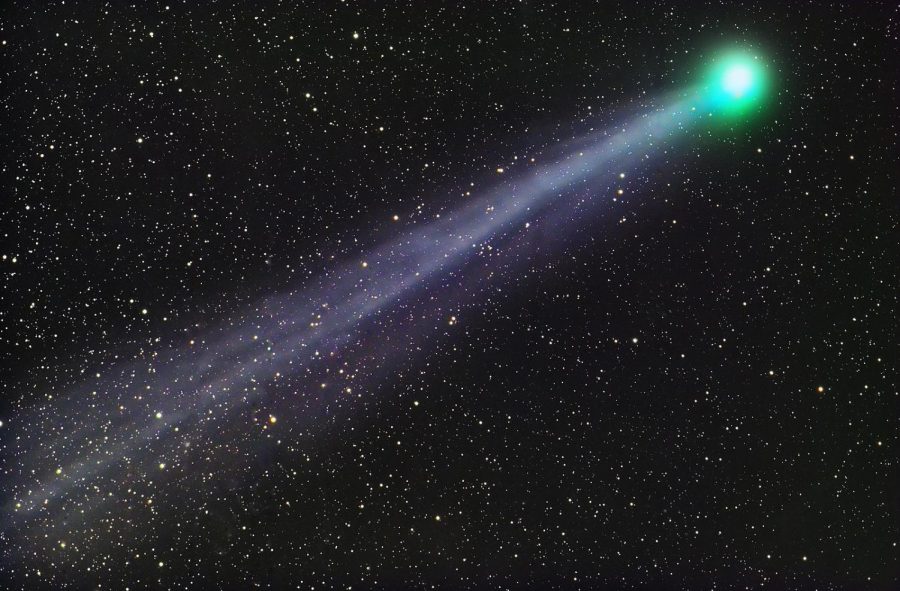Green comet makes appearance after 50,000 years
February 13, 2023
On Feb. 1, around 6:49 pm EST, the comet C/2022 E3 (2TF) — nicknamed “the green comet” –appeared in the sky for the first time since the Neanderthals roamed the Earth. It has been around 50,000 years since the last time the green comet passed through the inner solar system and was the closest approach to Earth in the comet’s perigee. The comet was still quite a distance away, equivalenting to about 28% of the distance between the Earth and the Sun, which is around 26 million miles.
Being more than a hundred times the moon’s distance away from Earth, the comet was visible to the naked eye in minimal light pollution areas. A pair of binoculars or a telescope provided the best views of the green glowing comet that might have had some stargazers wondering if they spotted a UFO. Rest assured it was a comet discovered by astronomers Bryce Bolin and Frank Musci in March 2022 using the Zwicky Transient Facility telescope at the Palomar Observatory in California.
Bolin activated a system to detect comets and investigated space using the circus-cannon-shaped telescope where he eventually spotted the comet. At first, Bolin could not confirm whether it was a comet or an asteroid and sent an alert and a request for a spare telescope to the Minor Planet Center at the International Astronomical Union. After days of observation with other speculators, it was confirmed that what they saw was a “coma,” which is a combination of dust and gas around the comet’s head, indicating it was in fact a comet.
As the comet approached the sun and is heated by the radiation of the star, the material at the comet’s surface transformed from solid ice to gas in a process called sublimation. This material is made up of complex carbon chain molecules, which form much of the comet’s body and break down into simpler carbon diatomic chain molecules — producing the green aura that gives the green comet its nickname.
For those that might think they missed out, do not worry, the comet is traveling very slowly and will be visible in the majority of the Northern Hemisphere in the first half of February. By the middle of the month, the comet will be hovering over the equator giving an opportunity to those living on the latitude a chance to see the spectacle. There is free planetarium software online to help determine where the comet will be in relation to the Polar star on a particular night.
“These kinds of comets that come this close or become this bright only come every few years or so, every four to five years,” Bolin said.
The green comet though has not been this close since the Ice Age – a period when the Mammoth was still alive — and is considered a once in a lifetime opportunity by the Planetary Society. It is recommended to gaze at the stars to get a glimpse of the rare green comet.







